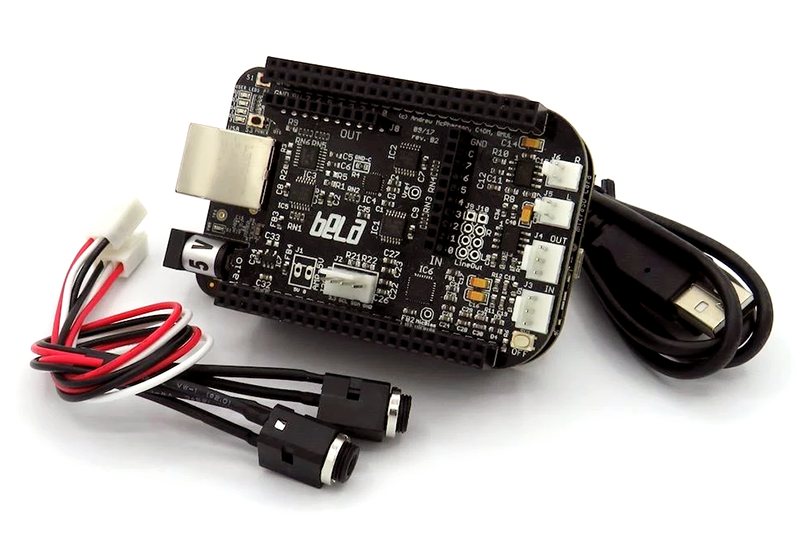Der euklidische Rhythmus bzw. Algorithmus gehört zu den Polyrhythmen. Er basiert auf einem Konzept des Mathematikers Euklid von Alexandria. Prinzipiell geht es dabei darum, den größten gemeinsamen Teiler zu finden. Hierzu gleich ein Klangbeispiel:
Kurze Geschichte:
Schon vor 2300 Jahren hat der Mathematiker Euklid von Alexandria sein wichtigstes Werk „Elemente“ verfasst. In diesem beschreibt er auch das Konzept zur Findung des größten gemeinsamen Teilers zweier Zahlen. Dieses Konzept ist als Euklidischer Algorithmus bekannt.
Rhythmik und Mathematik:
Er ist im Jahr 2004 entdeckte der kanadische Informatiker Godfried T. Toussaint die Beziehung zwischen dem Euklidischen Algorithmus und Rhythmen in der Musik. Mit diesem lassen sich viele bekannte Rhythmen zum Beispiel aus dem Rock’n’Roll, der afrikanischen und der südamerikanischen Musik berechnen.
Was ist ein ‚guter‘ Rhythmus? Ein Algorithmus, der die Schläge in einem bestimmten Zeitintervall so gleichmäßig wie möglich verteilt.
Das interessante an euklidischen Rhythmen ist, dass es nicht ewig gleichbleibende Rhythmen sind, sondern abwechslungsreiche und so auch spannendere für die Zuhörer. Er bietet eine gute Balance zwischen eintönig und zu komplex und verteilt alle Schläge gleichmäßig.
Wie funktioniert der Euklidische Rhythmus?
Gegeben sind immer zwei Zahlen, z.b. 13 und 5. Dann wird immer die kleinere von er größeren Zahl abgezogen, bis kein Rest mehr bleibt.
Tipp: Der Euklidische Algorithmus funktioniert besonders gut, wenn man Primzahlen benutzt.
Für den Eukldischen Rhythmus ist sozusagen der Weg das Ziel. Aus den Zahlen können wir die Schläge (geschrieben als 1) und die Pausen (geschrieben als 0) herauslesen. Das funktioniert so:
13 – 5 = 8 [1 1 1 1 1] [0 0 0 0 0 0 0 0]
8 – 5 = 3 [1 0] [1 0] [1 0] [1 0] [1 0] [0 0 0] 5 Nullen werden nach vorne hinter die 1en gestellt, 3 bleiben hinten stehen
5 – 3 = 2 [1 0 0] [1 0 0] [1 0 0] [1 0] [1 0] 3 Nullen werden nach vorne hinter die 10 Sequenzen gesetzt
3 – 2 = 1 [1 0 0 1 0] [1 0 0 1 0] [1 00] 2x 10 Frequenz wird nach vorne hinter die 100 Frequenzen gesetzt. Nun haben wir den fertigen Ryhthmus
2 – 1 = 1 Da ein Rhythmus zyklisch ist würde es ab hier keinen Sinn mehr machen, nach vorne zu verschieben
1 – 1 = 0
Zum einfacheren Verständnis kann man auf dieser Seite visuell sehen und ausprobieren, wie die Schläge und Pausen verteilt werden: https://dbkaplun.github.io/euclidean-rhythm/
Zudem gibt es hier eine Liste mit Zahlenkombinationen und ihrem Rhythmusmuster: http://www.iniitu.net/Euclidian_Erd%C3%B6s_Deep_Aksak_rhythms.html
Abschließend noch zwei Beispiele zum reinhören:
Quellen:
Ableton AG. „Don’t DJ über polymetrische, polyrhythmische, zirkuläre Musik | Ableton“. Zugegriffen 15. Dezember 2021. https://www.ableton.com/de/blog/dont-dj-moving-in-circles/.
bettermarks. „Euklid von Alexandria“. Zugegriffen 15. Dezember 2021. https://de.bettermarks.com/mathe/euklid-von-alexandria/.
Toussaint, Godfried. „The Euclidean algorithm generates traditional musical rhythms“. In In Proceedings of BRIDGES: Mathematical Connections in Art, Music and Science, 47–56, 2005. https://citeseerx.ist.psu.edu/viewdoc/download?doi=10.1.1.72.1340&rep=rep1&type=pdf.
W., Bernd. „Euklidische Rhythmen – Ist die Mathematik ein guter Percussionist?“ Tropone Sounds (blog), 18. Oktober 2018. http://tropone.de/2018/10/18/euklidische-rhythmen-ist-die-mathematik-ein-guter-percussionist/.


